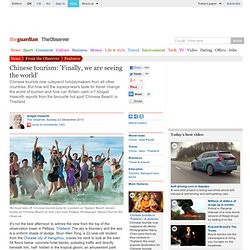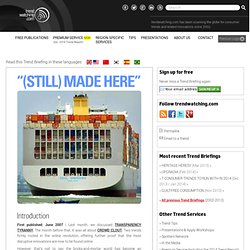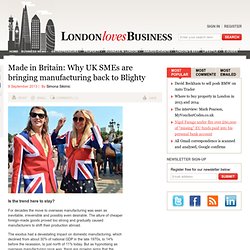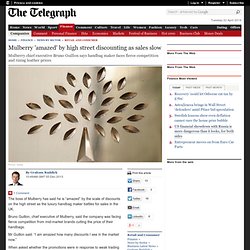

Chinese tourism: 'Finally, we are seeing the world' It's not the best afternoon to admire the view from the top of the observation tower in Pattaya, Thailand.

The sky is thundery and the sea is a uniform shade of sludge. Shun-Wen Tong, a 22-year-old student from the Chinese city of Hangzhou, cranes his neck to look at the town 54 floors below: concrete hotel blocks, pulsating traffic and directly beneath him, half- hidden in the tropical gloom, an amusement park called Funny Land. The off-season weather is just one of the dodgy things about Pattaya – a resort known to many as "Thailand's Blackpool", it is two hours outside Bangkok – but Tong is savouring every moment. "It's magical. I'm very happy," he says, holding his camera in one hand and a complimentary orange juice in the other. Tong is on his first-ever overseas trip. In 2012 the Chinese overtook Americans and Germans as the world's top international tourism spenders, heading off on 83m foreign trips and spending $102bn.
The British destinations cashing in on big-spending Chinese tourists. Bicester Village is one of the most popular destinations for Chinese visitors to Britain.

Photograph: Alamy In a move that should have high-end British businesses rubbing their hands with glee, George Osborne has unveiled a new visa system to make it easier for wealthy Chinese tourists and businessmen to visit the UK. Motivated in part by a study that found Chinese tourists were buying vastly higher numbers of expensive designer handbags in Paris than in London, Osborne said: "I don't want us to try to resist your economic progress, I want Britain to share in it. " In other words: "Hey big spender, spend a little time with me. " The Brits and their savings. Made in Britain – means most to older Brits. Summary.

STILL) MADE HERE. First published: June 2007 | Last month, we discussed TRANSPARENCY TYRANNY.

The month before that, it was all about CROWD CLOUT. Two trends firmly rooted in the online revolution, offering further proof that the most disruptive innovations are now to be found online. However, that’s not to say the bricks-and-mortar world has become an innovation backwater. Two mega-trends of our time, the greening of consumption and the proliferation of alternative status symbols, hold the promise of vast new riches for real-world entrepreneurs, while wreaking havoc on those that lag behind. Which brings us to the (STILL) MADE HERE trend: the comeback of all things local, all things with a sense of place, and how they're surfacing in a world dominated by globalization. “(STILL) MADE HERE encompasses new and enduring manufacturers and purveyors of the local. In this briefing, we’ll focus on three big drivers behind this trend — social responsibility, status and support.
Let's start with 'eco'. Made in Britain: Why UK SMEs are bringing manufacturing back to Blighty. Is the trend here to stay?

For decades the move to overseas manufacturing was seen as inevitable, irreversible and possibly even desirable. The allure of cheaper foreign-made goods proved too strong and gradually caused manufacturers to shift their production abroad. The exodus had a devastating impact on domestic manufacturing, which declined from about 30% of national GDP in the late 1970s, to 14% before the recession, to just north of 11% today. But as hypnotising as overseas manufacturing once was, there are growing signs that the trend has started to reverse. British-made fashion is back in business. Made in Britain is back in fashion.

The trend among up and coming designers is to keep manufacturing close to home. It’s more than a badge of quality or a commitment to local economies. Increasing fuel and labour costs overseas means that it can be a cost effective choice for smart fashion businesses to keep production in the UK. One in six UK manufacturers reverse offshoring in growing trend. 12,000 high street stores could close this year according to retail experts. Experts predict tens of thousands of jobs could be at risk as record numbers of customers desert stores to buy online instead A shocking 12,000 shops face the chop in a bloodbath on the high street this year.

Tens of thousands of jobs will be at risk as record numbers of customers desert stores to buy online instead. The dire warning from shopping experts comes after a week of dreadful sales figures for several leading retailers and supermarkets. Fashion chains, chemists, jewellers, newsagents and health and beauty stores are most likely to close as a result of changing shopping habits and the cost of living squeeze, says the Centre for Retail Research. More big chains are set to call in administrators following the collapse of shops including Tie Rack, Blockbuster, Barratts and Comet despite the improvement in the economy, says CRR boss Professor Joshua Bamfield. He said: “The decline of high streets is accelerating.
Marks & Spencer was down 2.1 per cent and Tesco 2.4 per cent. Mulberry 'amazed' by high street discounting as sales slow. Fashion brands have warned of restrained spending in September and October, with consumers seemingly tightening their belts after summer and preparing for Christmas.

Mr Guillon was speaking after Mulberry reported a 2pc rise in revenues to £78.1m in the six months to September 30, with pre-tax profits down from £10m to £7.2m. The company has enjoyed success in the UK with its Alexa and Willow handbags, and Mr Guillon says he is trying to transform Mulberry from a “British success story into global success story”. Mulberry plans to open a new flagship store in Paris next year. During the half-year, revenues from Mulberry’s international stores rose 29pc. Mr Guillon said this was the “first sign that the strategy is starting to work”. However, growth in UK retail sales slowed to 5pc, compared to 9pc in the same period last year. Mr Guillon said he was ““not happy, but not disappointed” about the UK performance.